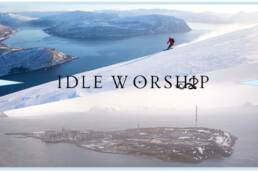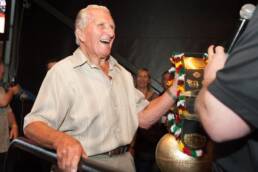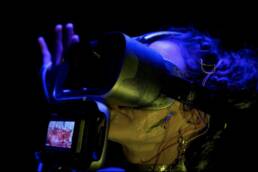Photographs by Steve Ogle
Launched in 1990 and anchored by oil and gas revenues, Norway’s Government Pension Fund Global is the world’s richest sovereign wealth fund, worth roughly $900 billion. This oily money keeps the country sliding smoothly as citizens — and even skiers — use the profits to stay healthy and happy. The Alberta oil and gas industry produces twice as much money for the machine but very little cash for the public coffers. What is Canada doing wrong?
“Fuck salmon. Tonight we eat whale,” says Sture Pettersen, his curly blonde hair sculpted by a ski toque into an unruly pompadour. It’s a declaration guaranteed never to be heard at a book-club gathering in Vancouver’s Kitsilano neighbourhood. We are 1,000 kilometres north of Norway’s capital city of Oslo, in the rustic dining room of a farmhouse. The six Norwegians in attendance welcome the steaming bowl of fin whale stroganoff in front of them the way I would receive a slab of smoked sockeye. The foreign guests, comprised of Canadian, Japanese, American, Kiwi, and French skiers, hungrily eye up the offering then look at one another sheepishly, like Green Party supporters caught shopping for bargains at Walmart. My West Coast-tinged political correctness on all matters regarding whales has me feeling guilty about our repast. However, after two days of ski touring, I’m famished. Whale, it is.
Nothing happens cheaply in this country. By North American standards, to gas up a vehicle is to mortgage your first child. To buy a dozen beers is to mortgage your second.
Our mini-United Nations of skiers are here, plunging forks into whale meat, thanks to Bjarte Hollevik, a citizen of Norway, one of the world’s richest and most expensive countries. We’ve ostensibly come to poach new ski lines and snag second descents, but I’ve really come to Norway to tap into the zeitgeist of this perplexing Nordic nation admired on the one hand for self-sufficiency, stewardship of its rich endowment of fossil fuels, and athletic performance, and on the other, called out for its ongoing commercial whale hunt and global fish-farming industry.
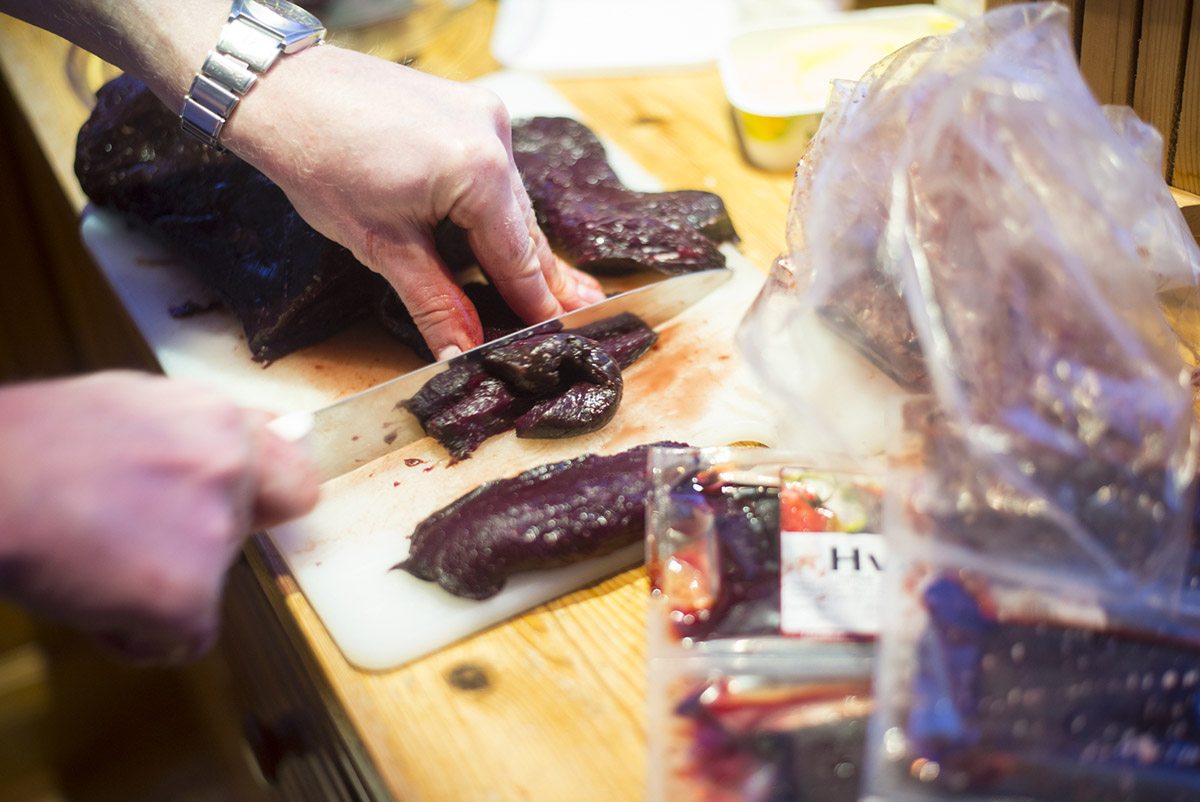
Hollevik is the perfect conduit into this country. He is the founder and principal owner of Moonlight Mountain Gear, a boutique gear company that he runs out of his garage in the non-descript town of Burfjord. Hollevik, along with his Italian engineer partner, designs and manufactures skis, headlamps up to 10,000 lumens of almost blinding locomotive strength, and a prototype tech binding that like all post-Dynafit tech bindings is a variation of the original technology. “The company started with the headlamps because we wanted to be able to ski fast at night, which is very long during the arctic winter,” Hollevik tells me, while we nurse pints of IPA, homebrewed by his brother.
In build, Hollevik is more football lineman than lithe Scandinavian skier; he’s a former banker with a young family and a big dream. When he drives, he’s constantly chattering into a hands-free device. He’s also perpetually optimistic, which you need to compete in the ski and binding manufacturing business from a place as remote as Burfjord. In some ways, his endeavour is symbolic of Norway’s practical, socially democratic ideals, where homegrown technology and wealth can be seen as something sacred, that the country’s human and naturals resources are to be cherished and nurtured. On our first night here, Hollevik cut us loose in a Burfjord supermarket with a couple of shopping carts and skiers’ appetites. I watched the Norwegian krone rack up on the cash register like digits in a Powerball Lottery. Nothing happens cheaply in this country. By North American standards, to gas up a vehicle is to mortgage your first child. To buy a dozen beers is to mortgage your second. “I’m working my magic,” he tells me, as though there’s a magical money tree in his backyard. In fact the money tree is called Innovation Norway, the government agency that supports entrepreneurship and tourism development, and clearly Hollevik is connected.
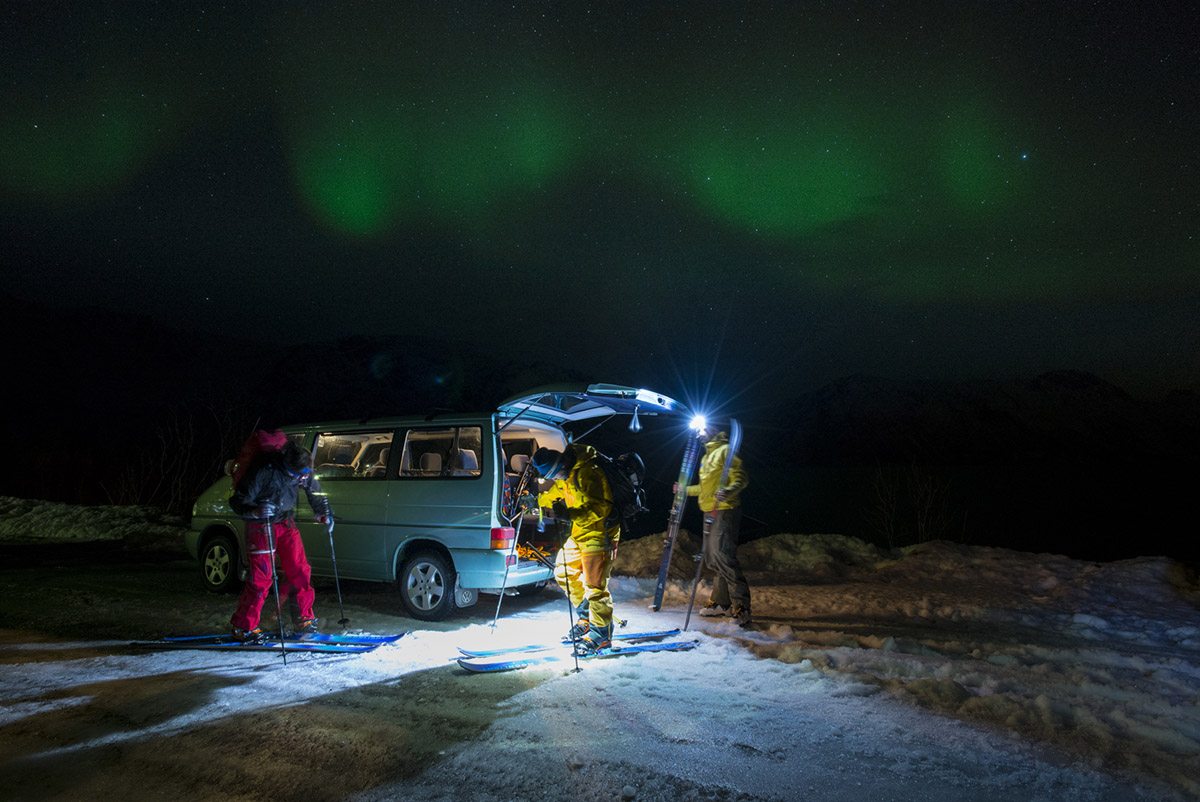
We awake lazily several days into our trip. The night before, a stunning display of aurora borealis lit up flames of blue, green and purple LSD light across the night sky before twisting into a double helix. Our guide Tore Karlstrom leads a convoy of three vehicles around the head of Langfjorden, an arm of the larger fjord called Romsdalsfjord, into a u-shaped valley quilted with farmhouses and pastures. The Finnmark Alps are relatively obscure. Fjords penetrate deep into the landscape from the Barents Sea and the region’s rounded, sometimes diminutive summits might fool the skier into driving past and continuing on to the better known Lyngen Alps in the neighbouring county of Troms. But that would be a mistake.
We begin skinning up through a birch forest, reminiscent of Japan, aiming for the domed summit of Skarelvtind. It was balmy for this time of year, especially for 70 degrees north. Like everywhere in the skiing world, Norwegians are talking climate change. After two hours of ascending, we arrive at the summit, overwhelmed with the panoramic mountainscape and steep-sided fjords below us. One by one we drop into a wide chute. Powder isn’t in the cards, but we are treated to sublime second best: an inch-thick dressing of corn atop a solid crust. Karlstrom tells us this easily accessible line has received just one previous descent. That’s how abundant the roadside riches are in Finnmark county.
Karlstrom has lived here most of his life. His grandparents settled the land when Europe was barely recovering from World War I and the next one brewed on the horizon. Norway fell quickly to the Nazis and endured the double humiliation of German occupation and the Nazi-sympathizing Norwegian puppet leader Vidkun Quisling. Norway suffered a final indignity near the end of the conflict when the Nazis, fleeing in advance of the Russians, scorched the towns and countryside of Finnmark, including Karlstrom’s family farm. Both before and after World War II, Norway was poor by European standards, a country of swarthy bumpkins fishing, falling trees and farming. The discovery of oil beneath the North Sea continental shelf in the 1960s was a game changer. Before the first production well was sunk, politicians took a nationalist, citizens-first approach. Simply put, big oil would have to pay large sums to operate in Norway. As a first step, the government created the crown corporation Statoil and gave it ownership of 50 per cent of all oil and gas exploration licenses and a 50 per cent equity stake in all foreign operations in exchange for shouldering half of the exploration costs. Companies at first balked at the terms, but they came back and now willingly pay taxes on profits of up to 78 per cent.
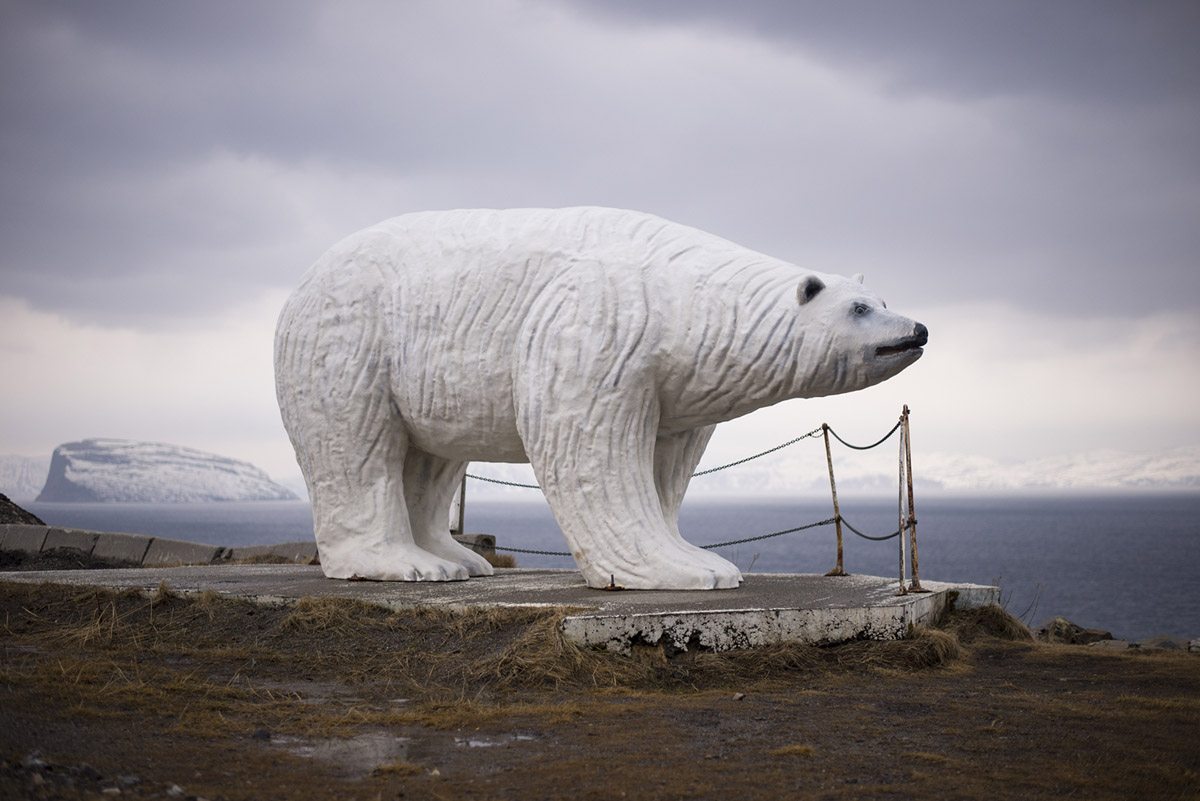
Comparisons between Norway and jurisdictions in Canada are sobering. Alberta’s Heritage Savings Fund was launched in 1976 and is worth US$14 billion today. Norway’s Government Pension Fund Global, the world’s richest sovereign wealth fund and anchored by oil and gas revenues was launched in 1990 and is now worth roughly US$900 billion, even though Norway produces a little more than half the oil that Alberta produces annually. British Columbia has no such fund, even though we’ve been in the natural-gas business for more than two decades.
Karlstrom and his brother now run the small dairy farm their grandparents started decades ago. They don’t participate directly in Norway’s oil and gas economy, but everybody benefits in the form of a sprawling social safety net, which includes everything from free postsecondary education to free daycare and preschool. Farming is Karlstrom’s bread and butter, and skiing is his passion. His friends call him off piste bonde (off piste farmer). He also teaches avalanche courses and “works” as a local guide, a title in Norway that doesn’t come with the same prestige and credentials as it does in other countries that have adopted UIAGM standard. “Most of the time I just guide people for free,” he says with a laugh.
On another day, after the Japanese, Americans and Kiwi have moved on, it’s just Karlstrom and two Canadians on a mission. After stuffing our gear into our host’s car, we drive 20 minutes and park at a plowed pullout near the crest of a low pass connecting Jøkelfjorden and Burfjord. On either side of the road lie easily accessible 1,800-metre summits decorated with entertaining ridges, wide open bowls and couloirs. So far we’ve had our share of mellow, open terrain. Today’s flat light has us wanting something with a little relief, hence we’re drawn to a pair of narrow couloirs arranged in a vee and splitting the precipitous face of Tverrelvtind Renna. The line on the looker’s left has never seen a descent, simply because it terminates in a rock wall below the summit ridge, and there is an abundance of other natural lines with straightforward entrances awaiting firsts. We opt for the one on the right, skied for the first time a year ago by a crew of Frenchmen.
Falling into the rhythm of the up track, I ponder Norway and how, perhaps, its shared sense of isolation and suffering during the wars might have laid the foundation for the strong sense of the collective good that manifests today, not only in prudent management of its subsurface riches, but also in other culturally distinguishing ways. For example, Norway has a law permitting people to camp freely on private land, even if there is a residence. In North America, private property is too often disrespected by those who don’t have it and hoarded by those who do. A decade ago I visited Norway during summer and backpacked solo through the rolling Hardangervidda Plateau following a string of tidy timber-framed backcountry huts. Each one was immaculately kept and stocked with pickled herring, pasta, canned sauces, chocolate, cereal, crackers and other staples. A price list was tacked to the pantry. There were no custodians. You paid for what you used and left the money in a little wooden box. What would seem a normal sense of collective responsibility to Norwegians, struck me as astonishing. Such a system would last a weekend in Canada or America before being plundered.

Half an hour of easy skinning brings us to the fan of snow that spits out the bottom of the chute. The snow is firm and skinning gets awkward as the pitch steepens. Karlstrom stomps out a platform beneath a boulder and we switch modes, strapping skis onto packs. The sky is dull grey. Random snowflakes drift lazily in the still air as we boot pack upwards into the couloir. Rock walls suddenly soar on either side, giving the illusion of sudden exposure and steepness, but Karlstrom’s clinometer ballparks it at barely 40 degrees. We swap leads kicking steps in hard snow, weaving from one side to the other, probing for softness that will be kinder to our calf muscles and won’t have me preoccupied by thoughts of an uncontrolled tomahawk down an obscure Norwegian mountain — I left Canada without extended travel medical and wonder how far Norway’s benevolent social safety net would extend. I banish morbid thoughts and focus on the task.
“Old guys like us don’t need to ski hard, steep snow like this,” Karlstrom says, chuckling when we regroup on a level scoop of snow beneath a bugle of rock. It’s a low snow year. Shark fins of stone mar the narrow opening leading to the ridge top exit so we opt to descend.
Turns are tentative at first, but the firm snow, a few degrees of temperature shy of ice takes an edge beautifully. Karlstrom dispatches the line on telemark skis with the confidence you’d expect from a Norwegian. In less than five minutes, we’re gathered on the lower angled fan of snow, quads pumped. Karlstrom nods to the shorter but no less enticing feature that angles diagonally across the rock face to where it meets the bottom of the line we just skied, too good and too close to pass up. As we start climbing again, shafts of orange and purple light pierce a hole in the sky and illuminate Jøkelfjorden in the distance. I breathe heavily, fuelled by even heavier Norwegian calories. Half an hour of steep boot packing and we run out of snow. Each of us finds a level spot among the rocks, careful not to drop a ski into the abyss as we fumble with bindings jammed with hardened snow. From this airy perch, the line we just climbed looks sketchy. My pulse quickens, but after a few slow turns, I relax, allowing my skis and mind to explore the couloir’s features, dumping speed on a wind scoop of snow skier’s right, then relenting to a long slide-slipping turn where the opening pinches to four metres wide and my edges scrape audibly on a patch of steel hard ice.
Karlstrom is waiting at the bottom, with a big grin and high five. “We’ll call this one ‘The Canadian,’” he says generously.

Two days before leaving Norway, a ski partner and I drive to Hammerfest, a city of 10,000 that clings to a barren cape jutting into the Barents Sea. We came looking for Norway’s massive liquefied natural gas (LNG) plant called Melkøya. We also find the local ski hill across from a bland Hammerfest subdivision. It’s a two T-bar affair that services an unappealing hillside of heather with a few ribbons of snow clinging defiantly to the earth. The lifts aren’t turning. Wind whips from the north carrying a light drizzle as we skin upward. After 20 minutes, we crest the summit and encounter an elderly man out for a walk in the wind with his dog. He looks at us like we are insane. We’re forced to shoulder our skis and trudge across the snowless plateau to get a view of Melkøya, the country’s natural gas cash cow. Gulls circle and squawk above the small island that accommodates this Gotham City installation of pipes, massive storage tanks and warehouses.
Alberta’s heritage savings fund was launched in 1976 and is worth US$14 billion today. Norway’s government pension fund global was launched in 1990 and is now worth roughly us$900 billion, even though norway produces a little more than half the oil that alberta produces.
Later we meet with Morten Bergan, a friend of Hollevik’s. He arrives at the plant entrance in a pick-up with both skis and a mountain bike in the back, packed for a weekend trip back to his hometown in the Lofoten Islands. Bergan, an electrician and plumber by trade, is assistant operations manager at Melkøya. After clearing security we jump into the cab of Bergan’s truck and enter the half-kilometre-long tunnel that burrows beneath the seafloor and connects the island plant to the mainland. On the other side, Bergan parks next to a platform viewpoint.
“This is the biggest money maker for Statoil. The plant will be in production until 2055 and we’re still finding new sources of gas,” Bergan says, as he zips up his bright green parka against the wind. “We were lucky to have some very smart politicians back in the 60s when we started with oil and gas.”
Lucky and smart. Though it may not be the most accessible of countries, Norway is one petro state that has much to teach about respect for the collective and how to do things right with that miraculous stuff hidden beneath the ground and hundreds of millions of years in the making.
Andrew Findlay
Andrew Findlay is an award-winning journalist and photographer with a home base on Vancouver Island. Born and raised in British Columbia, he continues to draw inspiration from the people, places, triumphs and travails of the Canadian West, however he ranges across the globe in pursuit of stories. Andrew’s journalistic interests are many; he enjoys peeling back the complex layers of social, environmental and business issues, but is also inspired by travel and outdoor adventure. Magazine and newspaper assignments have taken him to lands and cultures as diverse as the Great Bear Rainforest of BC, the remote mountains of northwestern Guatemala and the frozen ice hockey ponds of northern India.
Related Stories
Canada’s Ski Industry Loses a Legend
Jimmie Spencer of Vernon, British Columbia, championed the high aims of Canada’s ski resort industry for over 30 years.…
Nelson’s Civic Theatre Receives Grant To Develop Local Screen-Based Industry
With the help of a grant worth more than $300,000, the Civic Theatre in Nelson, British Columbia, is working towards…
Like Purple? From Sea Snails To Crude Oil, Here’s The History Of The Royal Colour In Outdoor Apparel
Coast Mountain Culture writer Clare Menzel follows the history of outdoor fashion's most polarizing pantone, peeking…
Why The Electric Bike Industry Is Booming And What You Need To Know Before Getting One
One industry that is exploding during Covid is electric bikes. This is why. And if you don't have one yet, this is why…


